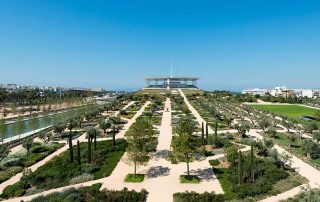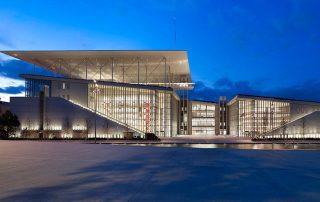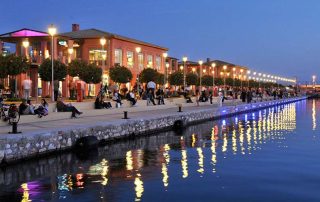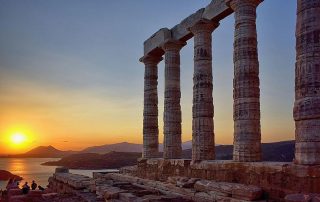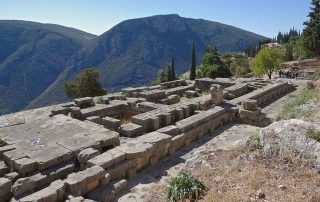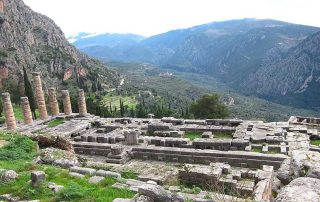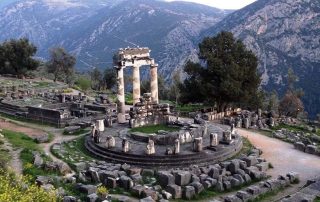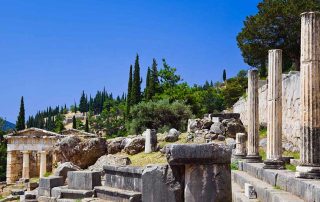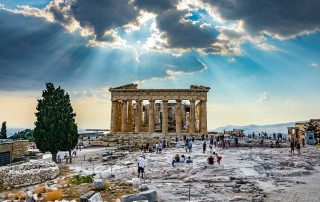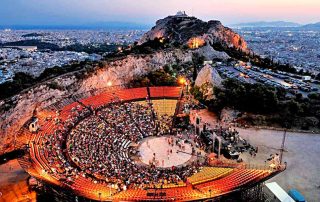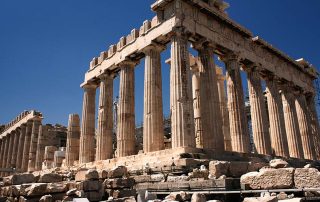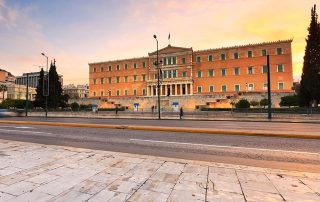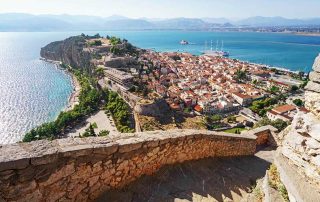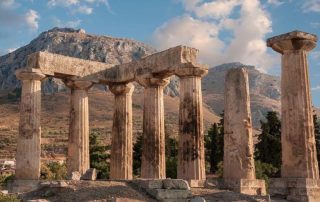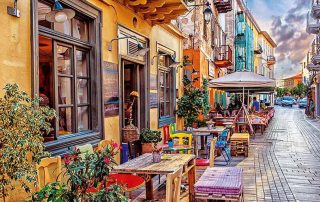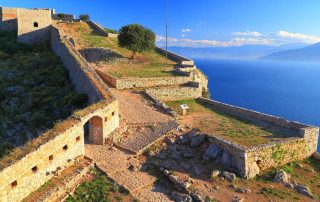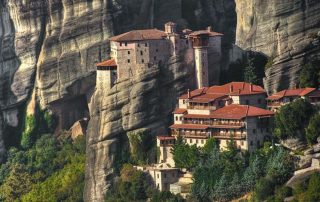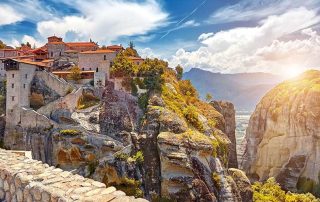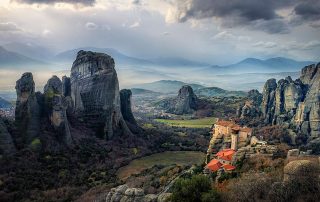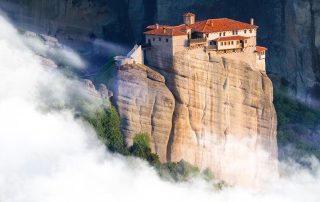Athenian Riviera / Cape Sounion
Sedan: 250 € (1 – 4 Passengers)
Van: 300 € (1 – 8 Passengers)
Duration: 6 – 7 Hours
Give us the chance to guide you over the coastal side of Athens. Athenian Riviera starts from the Stavros Niarchos Foundation Cultural Center, the largest cultural educational project ever undertaken in Greece. The SNFCC, designed by Renzo Piano, includes the new home facilities of the National Library of Greece and the Greek National Opera, as well as the Stavros Niarchos Park.
SNFCC is connected with Marina Flisvos, an upscale marina with views to Saronic Gulf, operating according to top international specifications, accommodating the special needs of mega yachts, offering numerous dining, shopping and recreational opportunities. Next stop for a dive or a photo: Lake Vouliagmeni, a small brackish-water lake fed by underground currents seeping through the mass of Mount Hymettus.
Last but not least, a stop in the Attica cape: Cape Sounio where Temple of Poseidon stands in front of Aegean Sea. Temple of Poseidon is one of the major monuments of the Golden Age of Athens.
Being the promontory of Athenian Riviera, you can benefit from the view and watch the most beautiful sunset in Athens.
Give us the chance to guide you over the coastal side of Athens. Athenian Riviera starts from the Stavros Niarchos Foundation Cultural Center, the largest cultural educational project ever undertaken in Greece. The SNFCC, designed by Renzo Piano, includes the new home facilities of the National Library of Greece and the Greek National Opera, as well as the Stavros Niarchos Park.
SNFCC is connected with Marina Flisvos, an upscale marina with views to Saronic Gulf, operating according to top international specifications, accommodating the special needs of mega yachts, offering numerous dining, shopping and recreational opportunities. Next stop for a dive or a photo: Lake Vouliagmeni, a small brackish-water lake fed by underground currents seeping through the mass of Mount Hymettus.
Last but not least, a stop in the Attica cape: Cape Sounio where Temple of Poseidon stands in front of Aegean Sea. Temple of Poseidon is one of the major monuments of the Golden Age of Athens.
Being the promontory of Athenian Riviera, you can benefit from the view and watch the most beautiful sunset in Athens.
DURATION: 9 – 10 hours
Delphi tour
Delphi has a special meaning, more than just another collection of ruins in a country that is full of them. Delphi in ancient times was considered the center of the known world, the place where heaven and earth met.
This was the place on earth where man was closest to the Gods.
It is located 2 hours away from Athens and during our travel, we cross by Livadia and Arachova, the most touristic winter destination due to its location in the mountains. The tour offers the opportunity to visit the Orthodox Monastery of Hosios Loukas, a historic walled monastery situated near the village of Distomo.
It is one of the most important monuments of Middle Byzantine architecture and art, and has been listed on UNESCO’s World Heritage Sites.
Delphi has a special meaning, more than just another collection of ruins in a country that is full of them. Delphi in ancient times was considered the center of the known world, the place where heaven and earth met.
This was the place on earth where man was closest to the Gods.
It is located 2 hours away from Athens and during our travel, we cross by Livadia and Arachova, the most touristic winter destination due to its location in the mountains. The tour offers the opportunity to visit the Orthodox Monastery of Hosios Loukas, a historic walled monastery situated near the village of Distomo.
It is one of the most important monuments of Middle Byzantine architecture and art, and has been listed on UNESCO’s World Heritage Sites.
DURATION: 6 – 7 hours
Athens City Tour
Take a tour around all Athenian sights and the most historical monuments of Athens. Starting from Acropolis hill, visit the ancient Parthenon, the Temple of Athena and Erechtheion, dedicated to both Athena and Poseidon; in order to have a full view of ancient Athens, we highly recommend you to combine this visit with the Acropolis Museum.
Stop by Panathenaic Stadium (meaning ‘stadium of all the Athenians’) or Kallimarmaro (meaning ‘made of fine marble’), the athletic stadium that hosted the first modern Olympic Games in 1896. Reconstructed in 1895 from the remains of the ancient Greek stadium known as the Panathenaic, Kalimarmaro is the only major stadium in the world constructed entirely of white marble. Continue with the Syntagma square, the center of Athens where Greek Parliament is located with its impressive Tomb of the Unknown Soldier. You can benefit from the traditional change of guard in front of the Greek Parliament. Last station is the highest point of Athens, Lycabettus hill, standing 277 meters above sea level. The view from Lycabettus Hill is best enjoyed at sunset whilst waiting for the lights of the Acropolis, Temple of Olympian Zeus, Panathenaic Stadium and Ancient Agora to come on.
You will also be reminded that Athens is surrounded by sea with spectacular views across the Aegean. At the top of the hill you will find the Greek whitewashed church of Agios Georgios (St. George) and all are welcome to enter. The viewing platform in front of the church provides sprawling views of Athens, stretching out to the city’s coastline.
Take a tour around all Athenian sights and the most historical monuments of Athens. Starting from Acropolis hill, visit the ancient Parthenon, the Temple of Athena and Erechtheion, dedicated to both Athena and Poseidon; in order to have a full view of ancient Athens, we highly recommend you to combine this visit with the Acropolis Museum.
Stop by Panathenaic Stadium (meaning ‘stadium of all the Athenians’) or Kallimarmaro (meaning ‘made of fine marble’), the athletic stadium that hosted the first modern Olympic Games in 1896. Reconstructed in 1895 from the remains of the ancient Greek stadium known as the Panathenaic, Kalimarmaro is the only major stadium in the world constructed entirely of white marble. Continue with the Syntagma square, the center of Athens where Greek Parliament is located with its impressive Tomb of the Unknown Soldier. You can benefit from the traditional change of guard in front of the Greek Parliament. Last station is the highest point of Athens, Lycabettus hill, standing 277 meters above sea level. The view from Lycabettus Hill is best enjoyed at sunset whilst waiting for the lights of the Acropolis, Temple of Olympian Zeus, Panathenaic Stadium and Ancient Agora to come on.
You will also be reminded that Athens is surrounded by sea with spectacular views across the Aegean. At the top of the hill you will find the Greek whitewashed church of Agios Georgios (St. George) and all are welcome to enter. The viewing platform in front of the church provides sprawling views of Athens, stretching out to the city’s coastline.
DURATION: 10 – 12 hours
Peloponnese Tour (Corinth Canal, Mycenae, Nafplio, Epidaurus)
Starting from Athens, we cross Corinth Canal, a narrow land bridge which connects the Peloponnese peninsula with the rest of the mainland of Greece, near the city of Corinth. It is also known as Isthmus of Corinth (the word “isthmus” comes from the Ancient Greek word for “neck” and refers to the narrowness of the land). The idea for a shortcut to save boats sailing all around the Peloponnese was long considered by the Ancient Greeks, but was first seriously proposed in 1830, soon after Greece’s independence from the Ottoman Empire, and was brought to completion in 1893 after eleven years’ work.
We stop by the site of ancient Corinth, which was first inhabited in the Neolithic period (6500-3250 B.C.). It is located at the northern base of the hill of Acrocorinth (the acropolis of ancient Corinth, is a monolithic rock overseeing the ancient city of Corinth, Greece) at the site of today’s agglomeration, Ancient Corinth.
We combine this visit with the archaeological site of Mycenae, in Argolis, one of the major centers of Greek civilization, a military stronghold which dominated much of southern Greece, Crete, the Cyclades and parts of southwest Anatolia. The period of Greek history from about 1600 BC to about 1100 BC is called Mycenaean in reference to Mycenae.
We then move to Nafplio, the first capital of independent Greece, with the most picturesque old town, narrow streets, hidden squares and stunning neoclassical mansions, is as enchanting as one could imagine. But the town also boasts impressive vestiges from its interesting past with three fortresses. The spectacular Palamidi castle, perched above Nafplio, was built by the Venetians in 1711–1714; climbing the steps (999 steps up for the adventurous or a two minute car ride for those who are not) to the top yields the reward of stunning views over the whole area. Admire gates dating back to the Bronze Age at the Acronauplia fortress standing tall behind the Old Town. The Bourtzi, located on a tiny island off the harbour, was also built by Venetians in the 15th century and has known a long history as a castle, a prison, a hotel, an office for tourism and housing for the Greek government. Reachable by boat, the Bourtzi is now used to host events and concerts in the summer.
Last stop is the ancient theater of Epidaurus. Probably the most beautiful and best preserved of its kind, the theater of Epidaurus was built in the 4th century BC by Polykleitos the Younger. Due to its excellent acoustics and condition, the ancient theater is still used today, most notably under the framework of the annual Epidaurus Festival.
Starting from Athens, we cross Corinth Canal, a narrow land bridge which connects the Peloponnese peninsula with the rest of the mainland of Greece, near the city of Corinth. It is also known as Isthmus of Corinth (the word “isthmus” comes from the Ancient Greek word for “neck” and refers to the narrowness of the land). The idea for a shortcut to save boats sailing all around the Peloponnese was long considered by the Ancient Greeks, but was first seriously proposed in 1830, soon after Greece’s independence from the Ottoman Empire, and was brought to completion in 1893 after eleven years’ work.
We stop by the site of ancient Corinth, which was first inhabited in the Neolithic period (6500-3250 B.C.). It is located at the northern base of the hill of Acrocorinth (the acropolis of ancient Corinth, is a monolithic rock overseeing the ancient city of Corinth, Greece) at the site of today’s agglomeration, Ancient Corinth.
We combine this visit with the archaeological site of Mycenae, in Argolis, one of the major centers of Greek civilization, a military stronghold which dominated much of southern Greece, Crete, the Cyclades and parts of southwest Anatolia. The period of Greek history from about 1600 BC to about 1100 BC is called Mycenaean in reference to Mycenae.
We then move to Nafplio, the first capital of independent Greece, with the most picturesque old town, narrow streets, hidden squares and stunning neoclassical mansions, is as enchanting as one could imagine. But the town also boasts impressive vestiges from its interesting past with three fortresses. The spectacular Palamidi castle, perched above Nafplio, was built by the Venetians in 1711–1714; climbing the steps (999 steps up for the adventurous or a two minute car ride for those who are not) to the top yields the reward of stunning views over the whole area. Admire gates dating back to the Bronze Age at the Acronauplia fortress standing tall behind the Old Town. The Bourtzi, located on a tiny island off the harbour, was also built by Venetians in the 15th century and has known a long history as a castle, a prison, a hotel, an office for tourism and housing for the Greek government. Reachable by boat, the Bourtzi is now used to host events and concerts in the summer.
Last stop is the ancient theater of Epidaurus. Probably the most beautiful and best preserved of its kind, the theater of Epidaurus was built in the 4th century BC by Polykleitos the Younger. Due to its excellent acoustics and condition, the ancient theater is still used today, most notably under the framework of the annual Epidaurus Festival.
DURATION: 12 hours
Meteora Tour
A trip to Meteora is a unique experience you should do once in your lifetime. Discover the geological wonder with 24 monasteries on top of rocks and cliffs, or spot the hermit caves carved into Swiss cheese-like rocks. Walk, climb, ride a bike – whatever means you use, you will be able to enjoy jaw-dropping views over the region once you’re at the top of the cliffs. One suggestion would be to discover the area through a semi-independent tour. This will allow you to get a better understanding of the monasteries and to get the spiritual and cultural heritage of Meteora.
Meteora, meaning ‘suspended in air’, is famous for its monasteries perched atop vertical peaks – but few know that before their construction in the 14th century, hermit monks first climbed these soaring stones to settle in the caves and hollows of the rocks as early as the 9th century.
A trip to Meteora is a unique experience you should do once in your lifetime. Discover the geological wonder with 24 monasteries on top of rocks and cliffs, or spot the hermit caves carved into Swiss cheese-like rocks. Walk, climb, ride a bike – whatever means you use, you will be able to enjoy jaw-dropping views over the region once you’re at the top of the cliffs. One suggestion would be to discover the area through a semi-independent tour. This will allow you to get a better understanding of the monasteries and to get the spiritual and cultural heritage of Meteora.
Meteora, meaning ‘suspended in air’, is famous for its monasteries perched atop vertical peaks – but few know that before their construction in the 14th century, hermit monks first climbed these soaring stones to settle in the caves and hollows of the rocks as early as the 9th century.
Note: This excursion is usually combined with a visit to Delphi and lasts two days.
All excursions can be customized based on your demands. Please contact us for further details.
Testimonials
Customer feedback
Super friendly and uncomplicated service
Super friendly and uncomplicated service. Punctual and available via WhatsApp. I love it when things go smoothly! Will definitely ride with you again once I am back in Athens!
Patrick
Perfect! Highly Recommend!
While we took the available taxi at the airport, I will keep their card, use them again and recommend them to friends! Very professional, clean car. Messaged the morning of our return trip to let us know he was on his way and arrived early. Looking forward to seeing you and Athens again! Thank you.
Michelle M.
Would use them again.
Taxi from Athens airport to city centre accommodation. Very friendly and helpful driver, nice comfortable ride, good price!
Rob

